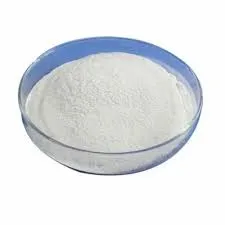
Dek . 29, 2024 06:11 Back to list
hydroxyethyl cellulose structure
Understanding Hydroxyethyl Cellulose Structure and Applications
Hydroxyethyl cellulose (HEC) is a water-soluble polymer derived from cellulose, a natural polymer that serves as the structural component of the cell wall in plants. HEC belongs to the class of cellulose ethers, which are modified forms of cellulose that have been chemically altered to enhance their properties for various applications. The unique structure of hydroxyethyl cellulose contributes significantly to its performance characteristics, making it widely used in a variety of industries.
Structure of Hydroxyethyl Cellulose
The structure of hydroxyethyl cellulose consists of a linear chain of glucose units, similar to that of cellulose. However, in HEC, some of the hydroxyl (–OH) groups on the glucose units are substituted with hydroxyethyl groups (-O-CH2-CH2-OH). This substitution occurs through a process called etherification, which involves reacting cellulose with ethylene oxide. The degree of substitution, which refers to the number of hydroxyl groups replaced by hydroxyethyl groups, is a critical factor in determining the properties of the resulting HEC.
The hydroxyethyl groups enhance the solubility of the polymer in water and provide a significant degree of viscosity control. These modifications allow HEC to form a gel-like consistency when mixed with water. The hydrophilic nature of the hydroxyethyl groups also facilitates hydrogen bonding with water molecules, increasing the polymer's capacity to swell and retain moisture.
Properties of Hydroxyethyl Cellulose
HEC exhibits several key properties that make it suitable for numerous applications
1. Thickening Agent HEC is known for its rheological properties, which allow it to act as an effective thickening agent. This characteristic is invaluable in the formulation of paints, coatings, and cosmetics, where controlling the viscosity is crucial for product performance.
2. Stabilizer In formulations such as emulsions, HEC helps stabilize the mixture by preventing the separation of oil and water phases. This is particularly important in the cosmetic and pharmaceutical industries, where product stability is a top priority.
3. Film-Forming Ability HEC can create a thin, flexible film when applied to a surface. This characteristic is utilized in various applications, including coatings, adhesives, and drug delivery systems.
hydroxyethyl cellulose structure

4. Water Retention The ability of HEC to retain water enhances moisture retention in agricultural applications, such as in soil additives and seed coatings. This property helps improve plant growth and agricultural yields.
Applications of Hydroxyethyl Cellulose
The versatility of hydroxyethyl cellulose has resulted in its adoption across multiple industries
- Cosmetics and Personal Care HEC is widely used in shampoos, conditioners, creams, and lotions due to its thickening and emulsifying properties. It helps improve the texture and stability of products, making them more appealing to consumers.
- Pharmaceuticals In the pharmaceutical industry, HEC is used as a binding agent in tablet formulations and as a thickener in liquid medications. Its biocompatibility makes it suitable for drug delivery systems.
- Construction In construction chemicals, HEC plays a vital role as an additive in mortars and plasters, improving their workability and water retention.
- Food Industry HEC is sometimes used as a food additive for thickening and stabilizing sauces and dressings while improving shelf life.
Conclusion
Hydroxyethyl cellulose stands out as a multifunctional polymer with a unique structure that imparts various advantageous properties. Its ability to thicken, stabilize, and retain moisture makes it essential across diverse sectors, including cosmetics, pharmaceuticals, and construction. As research continues to explore and expand its potential applications, HEC remains a valuable resource in both industrial and consumer products, highlighting the importance of modified cellulose derivatives in modern science and technology.
-
Versatile Hpmc Uses in Different Industries
NewsJun.19,2025
-
Redispersible Powder's Role in Enhancing Durability of Construction Products
NewsJun.19,2025
-
Hydroxyethyl Cellulose Applications Driving Green Industrial Processes
NewsJun.19,2025
-
Exploring Different Redispersible Polymer Powder
NewsJun.19,2025
-
Choosing the Right Mortar Bonding Agent
NewsJun.19,2025
-
Applications and Significance of China Hpmc in Modern Industries
NewsJun.19,2025







